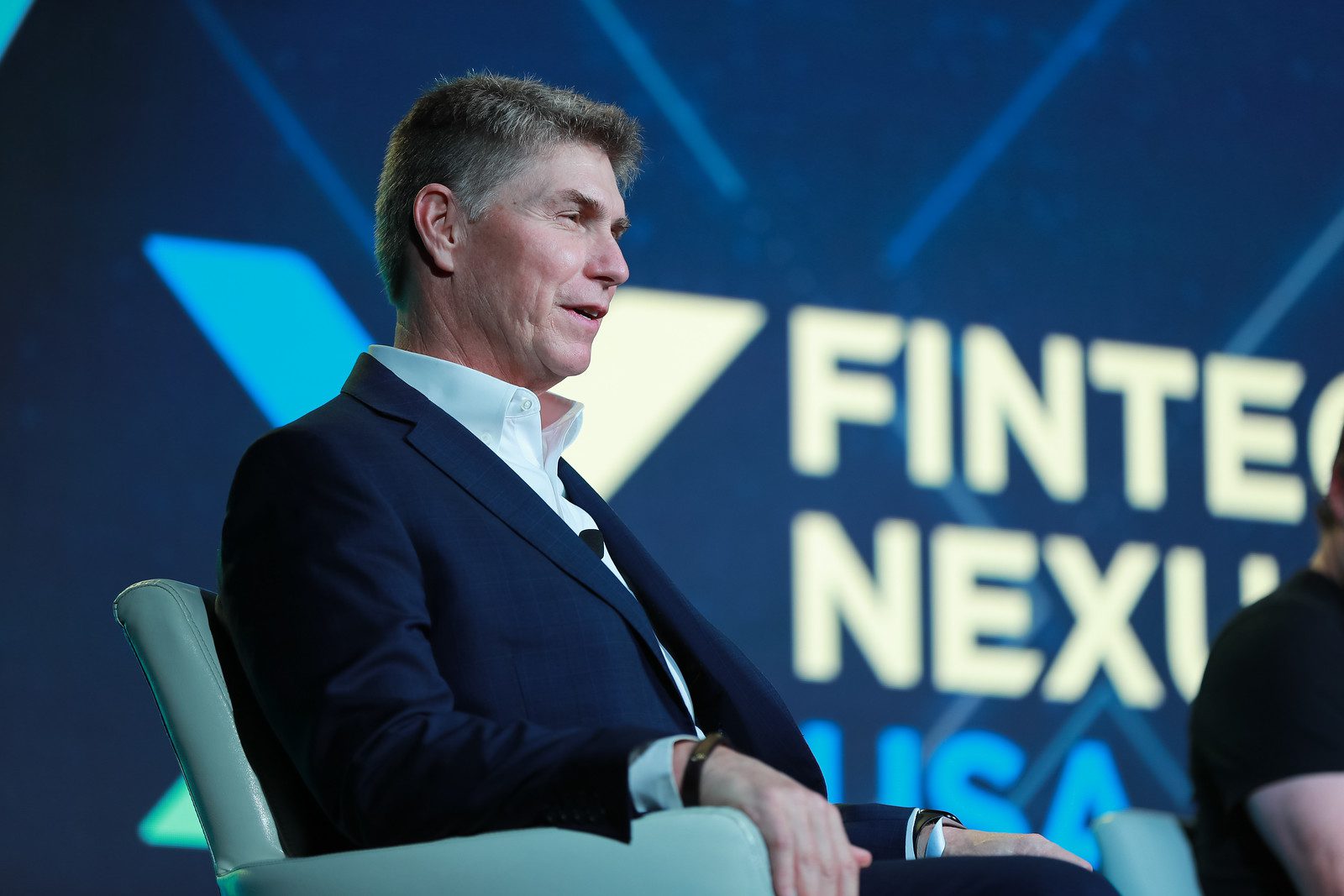When consumer-focused finance talks about crypto, the conversation trends toward trading, staking, and personal ownership, but that’s small-time compared to institutional, B2b transactions.
In a late-May fireside chat, reps from two banks and a crypto tech company sat down with Peter Renton to discuss the future of stablecoin payments.
Wade Peery, CAO of FirstBank, and Matthew Maxey, Head of innovation at Synovus bank, participate in the USDF Consortium of banks that use a common stablecoin. Naturally, they said the future of payments would be in crypto.
Co-founder and CEO of Figure Mike Cagney began by describing why blockchain is an excellent tech for building improvements to the trillion-dollar payments ecosystem. He said blockchain replaces trust with truth; you can look at an asset and know precisely what it represents. The tech allows you to transact “bilaterally” or without counterparty risk or settlement in the second part.
“So when you intersect those two things, you can create marketplaces where you’re agnostic to your counterparty,” He said. “This is incredibly powerful in financial services because if you think about it, financial services are all essentially intermediated marketplaces.”
Transacting on the blockchain
Cagney said the predicate around blockchain payments in the future is stablecoins. Luna’s collapse and bank run led the news, but he said the end would be bank-supported regular coin payments.
He described the test case in 2021, where Figure Equity Solutions employees listed their stock options on provenance blockchain for market trading with full regulatory backing. Cagney called it the first time a bank issued a stablecoin to support a blockchain transaction.
Provenance, in partnership with five community banks, then created a token called USDF and said any bank that wants to be a part of USDF could create and destroy the tokens and transfer them to transact on the blockchain.
He said that true bank-issued stablecoins grant an unlimited supply of tokens to support decentralized transactions. Coins for payments are better when infinite.

“The second and more relevant impact of this is USDF is essentially a payment network as a 24/7 365 rail of which banks and customers can move money,” he said. “This addresses ACH, interchange, cross border remit, and swift: it has a massive, profound ramification to the broader payments ecosystem.”
Cagney said that bank-issued stablecoins would eventually crowd out every other way of moving money.
Sitting on the sidelines is no longer an option
Wade Peery, a banker for decades, said he watched as waves of technology washed over the industry. When the first fintech wave passed, the banks sat on the sidelines, and Peery said he wanted to do more.
“I’ve seen the internet come to be in the banking business; I’ve seen cell phones evolve to smartphones,” Peery said. “In my view, blockchain is going to be as disruptive and beneficial to the industry as those things were, and sitting on the sidelines is not an option.”
With that spirit, FirstBank joined the USDF consortium to offer customers better, faster, and more equitable.
“We looked at it as the future core parts of our banking infrastructure,” Maxey said, pointing to the current core tech Synovus uses, like swift and p2p networks.

“We’re approaching this from an R&D perspective, incubating use cases and different use cases,” he said. ” The other side of why we decided to join was, look, we want to be a part of helping establish a new framework, a better way to lean in with other banks.”
It’s not just about believing stablecoins are at the forefront of finance; it’s being a part of the conversation and formulating what that future should look like in the U.S., Maxey said.
Don’t stablecoins fall from orbit?
Renton asked the pressing question: why should an audience of financial experts care about stablecoins when projects like Luna crash and burn in such an awful fashion.
Cagney said public bank-backed coins are not the same as decentralized exchange coins. He argued that bank-backed stablecoins like USDF are more secure, primarily due to safeguards that regulators called for this year.
“If you look at what Yellen put out president’s working group on stablecoin USDF, is exactly what she said it should be a bank-issued coin, done in a regulated fashion and KYC AML infrastructure behind it,” he said.
Cagney said that security comes from the banking ecosystem; though it has been slow to update in the past, that is one of the strengths. Regulation keeps bad reserve practices at bay, but it is hard to keep adjusting to government expectations when the fed itself may establish the banking system’s main competitor, Cagney said.
“And I think one of the things that banks recognize all this discussion about central bank digital currency CBDC, is the banks need to get in front of that,” Cagney said. “If the Fed builds a CBDC, that’s the end of the banking system. It’s an existential threat that the banks need to be in front of.”
Who controls the bank stablecoins?
Cagney said that member banks control USDF, and their power enables them to surpass fintech solutions to legacy bank problems. With that power, member banks can program whatever they want within the financial space; Cagney said the term programmable money is genuine and not even fully realized.
He gave the example of Square, which acts as a merchant acquirer and lender in transitions: a bank can do that with new tech. He said banks could take USDF and integrate it into their mobile solution, giving the customer a new payment method and “becoming” the merchant acquirer.
“Banks will say, ‘I’ll cut out that 100 to 300 basis points of interchange expense, and I will set you up to accept USDF as a payment rail from our customers,'” he said. “The bank will take that high-frequency data, and they can become merchant lenders, and not only the disintermediate, Square that intermediate Square Cash too.”
FirstBank is already doing that through this payment rail; it’s not just a feature. It is a core utility in the banking system, and Cagney said it only happens because banks govern the coin.
Waiting for regulators
Peery said it is an enormous benefit for small businesses, which pay 3% to accept payments. “They’re giving up 3% of their gross margin to take the money for what they just sold,” he said. “If we can cut that to just 1%, there’s your win right there.”

He said it depends on the regulatory bodies’ comfort, but the technical side has not been a “heavy lift”; instead, programmable money has been easy to work with and will rollout when approved.
Maxey said the roadmap at Synovus is very retail and commercial business and service-focused. Within the next twelve months or so, they will potentially be able to mint and burn on the network with partners, but Maxey said it is also dependent on the regulator.
“A lot of our value comes from our commercial business, in b2b or b2b2c models,” he said. “We have a large wholesale business and specialty finance model, allowing those partners to pay themselves within our ecosystem with much less friction and high leaves of data.”


